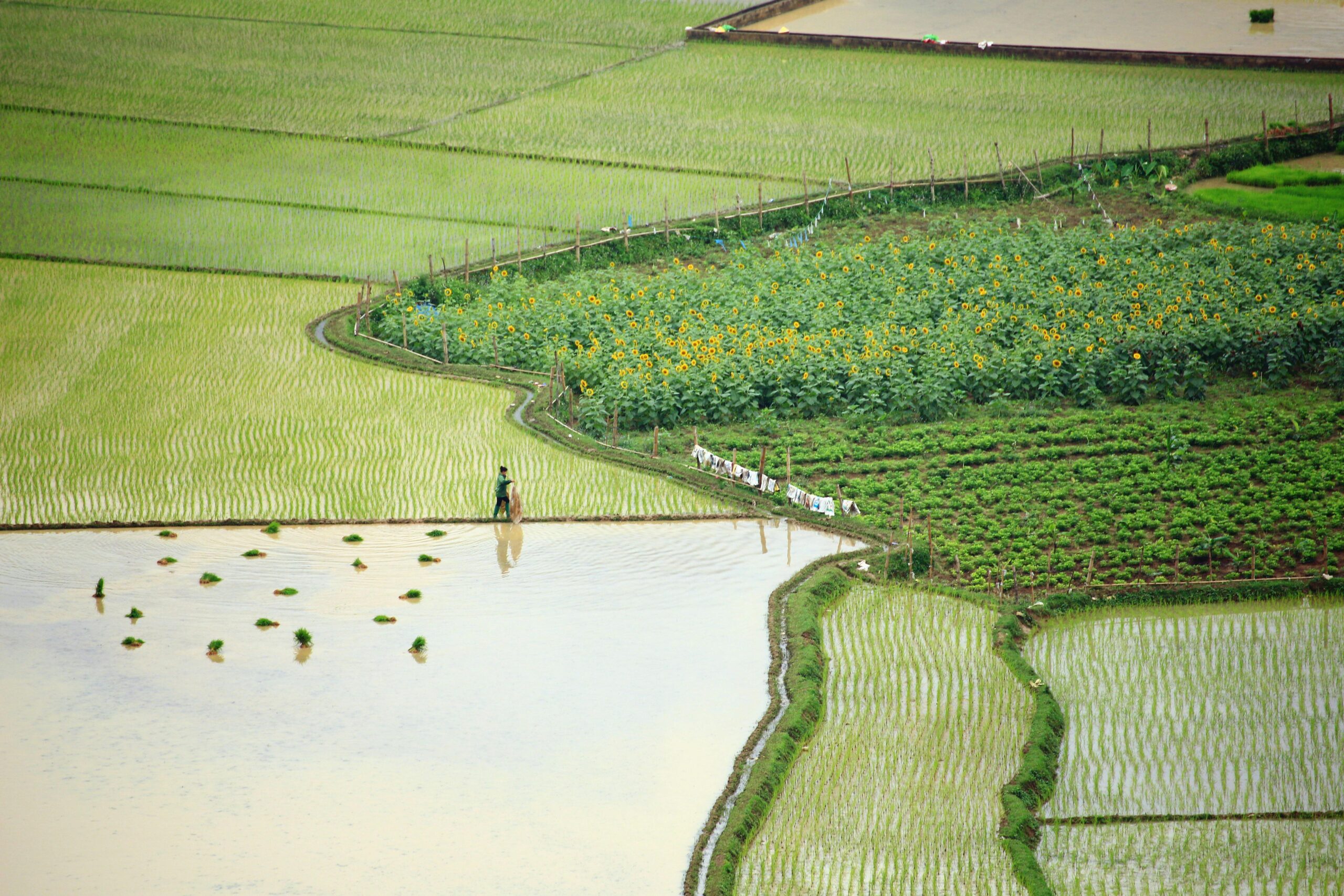Crop rotation is a practice that has been utilized by farmers for centuries, and for good reason. This age-old technique involves systematically changing the type of crops grown in a particular field from season to season. But what exactly is the purpose behind this agricultural strategy? In this article, we will delve into the benefits of crop rotation, how it enhances soil health, and ultimately maximizes yields. So, whether you are a seasoned farmer or simply curious about sustainable farming practices, read on to discover the art of crop rotation and its importance in modern agriculture.
The History of Crop Rotation
Crop rotation has been utilized for thousands of years, with its origins dating back to ancient civilizations such as the Greeks and Romans. These early agricultural societies recognized the importance of alternating crops in order to maintain soil fertility and combat pests and diseases.
Over time, farmers around the world developed their own unique crop rotation systems based on their climate, soil conditions, and available crops. The practice spread across continents, with different regions adopting their own variations and adapting them to suit their specific needs.
The Importance of Crop Rotation
So, why is crop rotation so important in modern agriculture? There are several key reasons:
- Soil Health: Crop rotation helps to prevent nutrient depletion and maintain soil fertility. Different crops have varying nutrient requirements, and by rotating crops, farmers can ensure that specific nutrients are not depleted from the soil.
- Pest and Disease Control: Crop rotation disrupts the life cycles of pests and diseases, reducing their populations and preventing the build-up of specific pathogens that can damage crops. It also helps to break the cycle of pests that target specific crops.
- Weed Suppression: Different crops have different growth habits and root structures, which can help suppress the growth of weeds. By rotating crops, farmers can effectively manage weed populations and reduce the need for herbicides.
- Sustainable Farming: Crop rotation is an essential component of sustainable farming practices. By maintaining soil health, reducing reliance on chemical inputs, and promoting biodiversity, crop rotation contributes to long-term environmental and economic viability.
As we can see, crop rotation is not just an ancient tradition; it is a vital tool in modern agriculture. By understanding the history and importance of crop rotation, we can appreciate the benefits it brings to both farmers and the environment.
Implementing Crop Rotation: Strategies and Considerations
Implementing an effective crop rotation system requires careful planning and consideration. Here are some key strategies and factors to keep in mind:
1. Crop Selection
When selecting crops for rotation, it is important to choose plants that have different nutrient requirements, growth habits, and root structures. This diversity helps optimize soil health and minimize the risk of pests and diseases.
2. Rotation Patterns
There are various rotation patterns to choose from, depending on factors such as climate, soil type, and available crops. Some common rotation patterns include simple rotations (where crops are rotated between two or three different types), complex rotations (involving multiple crops in a specific sequence), and relay cropping (where a new crop is planted before the previous one is harvested).
3. Timing and Sequence
Timing is crucial when implementing crop rotation. Consider the growth duration of different crops and plan the sequence accordingly. Some crops may leave residues that can affect the following crop, so it is important to factor in these considerations when deciding on the timing and sequence of rotations.
4. Cover Crops
Incorporating cover crops into the rotation system can provide numerous benefits. Cover crops help prevent soil erosion, improve soil structure, suppress weeds, and add organic matter to the soil when incorporated. Choose cover crops that complement the main crops in your rotation and fulfill specific objectives (such as nitrogen fixation or weed suppression).
5. Monitoring and Adaptation
Monitoring the success of your crop rotation system is essential. Keep track of yields, soil health indicators, pest and disease incidence, and weed populations. Based on this information, make necessary adjustments to your rotation plan to optimize its effectiveness.
By carefully considering these strategies and factors, farmers can implement a well-designed crop rotation system that enhances soil health, improves productivity, and promotes sustainable farming practices.
Benefits of Crop Rotation: Maximizing Yields and Sustainability
Crop rotation offers a range of benefits that contribute to both short-term and long-term agricultural success. Let’s explore how this practice can help maximize yields and promote sustainability:
1. Improved Soil Fertility
One of the primary advantages of crop rotation is the preservation and enhancement of soil fertility. By rotating crops with different nutrient requirements, farmers can prevent the depletion of specific nutrients from the soil. This leads to healthier, nutrient-rich soil that supports the optimal growth of crops.
2. Disease and Pest Management
Crop rotation plays a crucial role in managing pests and diseases. By interrupting the life cycles of pests and pathogens, farmers can reduce the prevalence and severity of infestations. Additionally, rotating crops can prevent the buildup of specific pests that target particular crops, reducing the need for chemical interventions and promoting natural pest control methods.
3. Weed Control
Weeds can compete with crops for resources such as water, nutrients, and sunlight. Crop rotation can help manage weed populations by disrupting their growth cycles and utilizing crops with different growth habits and root structures. This natural weed control approach reduces reliance on herbicides, minimizing environmental impacts and costs.
4. Enhanced Nutrient Cycling
Crop rotation promotes efficient nutrient cycling within the ecosystem. Leguminous crops, for example, have the ability to fix atmospheric nitrogen, enriching the soil with this essential nutrient. When these crops are rotated with others, the stored nitrogen is made available to subsequent crops, reducing the need for synthetic fertilizers.
5. Biodiversity and Environmental Sustainability
Crop rotation contributes to biodiversity conservation and environmental sustainability. By diversifying crop species, farmers create habitats that support a variety of beneficial organisms, such as pollinators and natural enemies of pests. This promotes ecological balance and resilience, reducing the risk of crop failures and enhancing overall ecosystem health.
With these significant benefits, crop rotation proves to be an indispensable practice for farmers looking to optimize yields, reduce reliance on chemicals, and foster sustainable agricultural systems.
Challenges and Considerations in Crop Rotation
While crop rotation offers numerous benefits, it also presents certain challenges and considerations that farmers must address for successful implementation. Let’s explore some of these challenges:
1. Crop Selection and Planning
Selecting the right crops for rotation requires careful consideration of factors such as climate, soil type, market demand, and crop compatibility. Farmers must also plan the rotation sequence to maximize the benefits and address specific challenges, such as weed suppression or disease control.
2. Knowledge and Experience
Implementing an effective crop rotation system demands knowledge and experience. Farmers need to understand the growth habits, nutrient requirements, and potential interactions of different crops. Staying updated with the latest research and best practices can help overcome challenges and optimize results.
3. Crop Rotations and Market Demands
Aligning crop rotations with market demands can be a challenge. Some crops may have higher market value or demand, but they may not fit well into the rotation system. Farmers must strike a balance between crop rotation benefits and market considerations to ensure economic viability.
4. Equipment and Infrastructure
Implementing crop rotation may require adjusting equipment and infrastructure. Different crops often have specific requirements for planting, harvesting, and post-harvest handling. Farmers may need to invest in specialized equipment or modify existing infrastructure to accommodate the varying needs of rotated crops.
5. Transition Periods
Transitioning from one crop to another in a rotation system may involve additional costs and challenges. For example, adjusting irrigation systems, soil amendments, or pest management practices may be necessary. Farmers should plan for these transition periods to minimize disruptions and optimize the success of the rotation system.
By acknowledging and addressing these challenges, farmers can develop effective strategies to overcome obstacles and reap the long-term benefits of crop rotation.
Conclusion: Harnessing the Power of Crop Rotation for Sustainable Agriculture
Crop rotation is a time-tested agricultural practice that offers a multitude of benefits for farmers and the environment. By systematically alternating crops, farmers can improve soil fertility, manage pests and diseases, control weeds, enhance nutrient cycling, and promote biodiversity. The result? Increased yields, reduced reliance on synthetic inputs, and long-term sustainability.
Implementing crop rotation requires careful planning, crop selection, and monitoring. Farmers must consider factors such as crop compatibility, market demands, and equipment adjustments. It is also essential to stay informed about the latest research and best practices in order to overcome challenges and maximize the effectiveness of the rotation system.
As the global population continues to grow, sustainable farming practices like crop rotation become increasingly important. By adopting this practice, farmers can contribute to a healthier environment, better soil health, and more resilient agricultural systems. Crop rotation is not just an ancient tradition; it is a powerful tool that modern farmers can utilize to ensure the long-term viability and productivity of their fields.
So, whether you are a farmer looking to optimize your yields or simply an enthusiast interested in sustainable agriculture, consider harnessing the power of crop rotation. Embrace this ancient practice and unlock its incredible potential for a greener and more sustainable future.
In conclusion, crop rotation is a valuable practice that has stood the test of time. By alternating crops in a systematic manner, farmers can improve soil health, manage pests and diseases, control weeds, enhance nutrient cycling, and promote biodiversity. This age-old technique offers numerous benefits for both farmers and the environment, including increased yields, reduced reliance on synthetic inputs, and long-term sustainability.
Implementing crop rotation requires careful planning, crop selection, and monitoring. Farmers must consider various factors such as crop compatibility, market demands, and equipment adjustments. Staying informed about the latest research and best practices is crucial for overcoming challenges and maximizing the effectiveness of the rotation system.
As our global population continues to grow, sustainable farming practices like crop rotation become ever more important. By embracing this ancient practice, farmers can contribute to a healthier environment, better soil health, and more resilient agricultural systems. Crop rotation is not just a tradition; it is a powerful tool that modern farmers can use to ensure the long-term viability and productivity of their fields.
So, whether you are a farmer seeking to optimize your yields or simply someone interested in sustainable agriculture, consider harnessing the power of crop rotation. Embrace this practice and unlock its incredible potential for a greener and more sustainable future.

